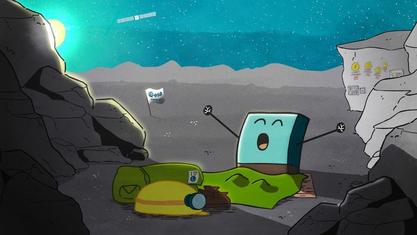

 Image of the comet nucleus taken by Rosetta's NavCam on 5 June 2015 while at a range of 208 km. Solar heating is causing jets of gas and dust, which form the comet's characteristic tail as it approaches the Sun. Image courtesy of the European Space Agency.
Image of the comet nucleus taken by Rosetta's NavCam on 5 June 2015 while at a range of 208 km. Solar heating is causing jets of gas and dust, which form the comet's characteristic tail as it approaches the Sun. Image courtesy of the European Space Agency.  RSS Feed
RSS Feed
